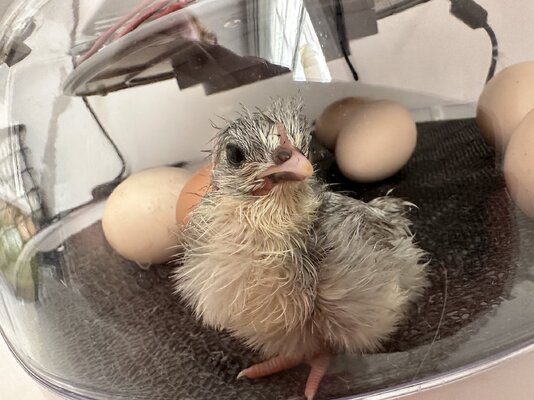Crazy_Beautiful
Songster
So my mama quit on day 19.
No mites I looked. Just no longer broody. Didn’t puff up or anything. She’s already allowed the rooster to mate her … crazy girl.
I originally had 12 eggs. I put 6 under her and 6 in my incubator. She’s a bantam so I had thought 12 was too many.
So I just added her 6 to my incubator.
Should / can I check for viability tonight when it’s dark enough?
Did I screw up by adding them into the incubator meaning contamination? I just really had no other option
No mites I looked. Just no longer broody. Didn’t puff up or anything. She’s already allowed the rooster to mate her … crazy girl.
I originally had 12 eggs. I put 6 under her and 6 in my incubator. She’s a bantam so I had thought 12 was too many.
So I just added her 6 to my incubator.
Should / can I check for viability tonight when it’s dark enough?
Did I screw up by adding them into the incubator meaning contamination? I just really had no other option






